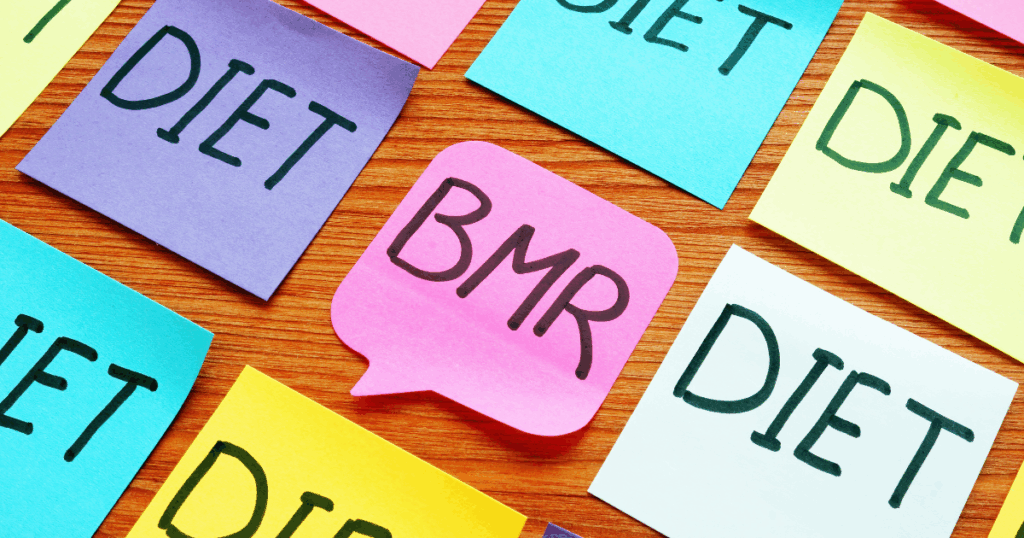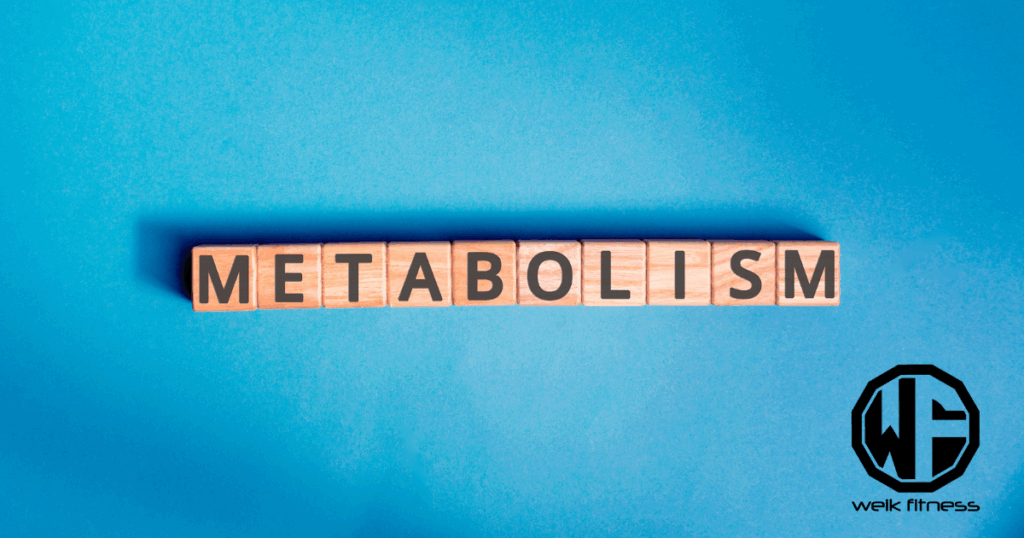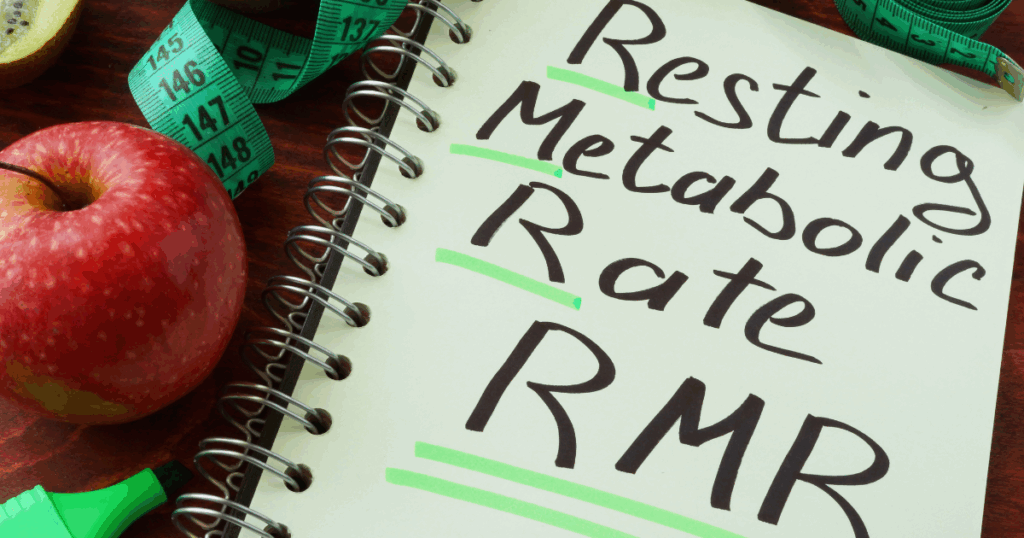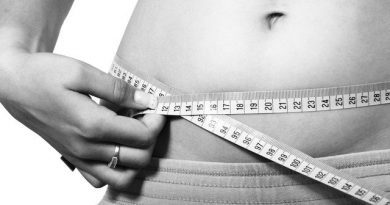Metabolism 101: How Many Calories Does Muscle Burn Per Day?
I stopped counting the number of times I hear people ask how many calories does muscle burn per day. Many people throw out the statement that the more muscle you have, the more calories you burn even at rest.
Heck, I’ve put it in a ton of articles I’ve published talking about obesity and why adding lean mass should be a priority. But how accurate is it?
The fact is, many people are struggling to lose weight even with solid workouts and careful eating. You can crush workouts and count the number of calories you consume, and potentially still not see the results you’re looking for.
Here’s the truth.
Metabolism sets the pace, and muscle helps you burn more energy than body fat. The boost is real, but smaller than the hype. This guide explains how many calories muscle burns per day, the science that shapes your burn rate, and how to train for better results.
Disclaimer: This article is for informational purposes only and is not meant to treat or diagnose any condition. It is recommended that you speak with your doctor before starting any exercise program, changing your daily nutrition, or adding any supplements to your regimen.
Table of contents
- What is Metabolism and How Does Muscle Affect It?
- Calories Burned by Muscle vs. Fat
- Factors Influencing Calorie Burn in Muscles
- How Lean Muscle Affects Daily Calorie Burn
- How to Build Muscle to Increase Calorie Burn
- Myths and Misconceptions About Muscle and Metabolism
- Practical Tips to Maximize Calorie Burn
- Improve Weight Loss By Increasing Metabolism and Muscle Burn
- FAQs
- References
Key Takeaways
- One pound of muscle burns about 6 calories per day at rest. A pound of fat burns about 2 calories per day, based on data from the Department of Health and Human Services.
- Adding 20 pounds of lean muscle usually increases resting burn by around 120 daily calories, not hundreds.
- Basal Metabolic Rate, or BMR, is the energy your body uses at rest. It commonly accounts for around 70 percent of daily calorie burn, and lean mass has a strong influence.
- Muscle uses about three times more energy than fat. Still, even large muscle gains often raise total daily energy use by only 4 to 5 percent.
- Regular strength training and a higher protein diet help maintain or increase BMR. Mayo Clinic and Harvard Health both support this approach for healthy weight control.

What is Metabolism and How Does Muscle Affect It?
Metabolism is the set of chemical processes that turn food into energy. Your body relies on it to move, think, pump blood, and breathe. Muscle changes how much energy you use each day, even during rest.
What is metabolism?
Your body runs thousands of reactions every second. These reactions, called metabolism, convert food and drinks into usable energy.
Two parts drive it:
- Catabolism breaks down nutrients to release energy.
- Anabolism uses that energy to build and repair tissues.
Every heartbeat and breath comes from these processes inside your cells. You burn calories even while sitting still because basic functions never stop.
Daily energy use has four parts:
- Basal Metabolic Rate (BMR)
- Thermic Effect of Food (TEF)
- Exercise Activity Thermogenesis (EAT)
- Non-Exercise Activity Thermogenesis (NEAT)
BMR is the largest share. It keeps organs working during rest and often reaches about 70 percent of total burn. The Department of Health and Human Services notes that age, sex, body size, muscle mass, and genetics all affect how fast you burn calories.
Metabolism is not a single switch. It is the sum of all chemical reactions that keep you alive.
RELATED: Do You Know How Many Calories You Burn Every Day?
If you want to burn more calories each day, build lean muscle. Muscle tissue needs more energy than fat, even during sleep or when you sit.
How does lean muscle mass influence metabolism?
Lean muscle mass strongly shapes daily calorie burn. Muscle uses more energy than body fat, even at rest. Each pound of muscle burns about 6 calories per day. Each pound of fat burns around 2 calories per day.
More lean muscle means a higher BMR. Men often have a higher BMR than women, in part due to greater lean mass. With age, inactive adults lose muscle and see a slower metabolism. That shift can increase weight gain risk.
Small losses or gains in muscle change calorie use all day long, not only during workouts. This is why consistent activity, including both cardio and resistance training, is so helpful. It protects muscle and supports steady calorie burn, which aids weight loss and better body composition.
Calories Burned by Muscle vs. Fat

Body size and composition change how many calories you burn in a day. Muscle uses more oxygen and energy than fat, even while sitting still.
How many calories does muscle burn daily?
At rest, a pound of muscle burns about 6 calories per day. That number seems small, but it matters over time. By comparison, a pound of fat burns about 2 calories daily. Muscle is active tissue and needs more oxygen to stay healthy. That need raises baseline energy use.
Gaining muscle can raise daily burn. An increase of 20 pounds of lean mass often boosts resting metabolic rate by 80 to 100 calories per day. Claims that each pound of muscle burns fifty calories per day do not match research findings.
You can build lean mass to become a better calorie burner, just keep your expectations realistic.
How does muscle calorie burn compare to fat?
Muscle burns roughly three times more daily calories than fat. A pound of muscle uses around 6 calories per day. A pound of fat uses about 2. This gap is key for steady metabolism and weight control.
Skeletal muscle can account for close to 20 percent of daily calorie burn. Fat tissue accounts for about 5 percent in many people. Fat stores energy. Muscle stays active and needs fuel, even during rest.
More lean mass raises resting energy use a bit. A 20 percent muscle increase often produces only a 4 to 5 percent rise in resting metabolic rate.
Still, at the same body weight, a more muscular frame tends to burn more energy each day than a softer frame. That is why keeping muscle supports better health and easier weight control over time.
Factors Influencing Calorie Burn in Muscles

Many variables shape how hard your muscles burn calories. BMR, daily movement, training style, and even genetics play a role. These factors change your energy needs across your life.
What is Basal Metabolic Rate (BMR)?
BMR is the calories your body uses at rest to stay alive. It covers breathing, blood flow, and cell repair. Think of it as the energy cost of basic survival when you are not moving.
RELATED: Try Out Our Calculator That Shows You How Many Calories You’ve Burned
BMR often makes up 60 to 70 percent of daily burn. Bigger bodies and higher lean mass raise BMR. Muscle needs more energy than fat, even during rest.
Men usually show higher BMR than women because they often carry more muscle and less body fat. Age lowers BMR as muscle falls with inactivity. Genetics matters too.
Some people burn calories faster, even with similar habits.
How do activity levels affect muscle calorie burn?
Your daily movement influences how many calories your muscles use. More activity equals more energy burned, both during exercise and during normal tasks.
- Vigorous workouts, like heavy lifting or high-intensity intervals, burn more calories than walking or light stretching.
- Active people get more burn from NEAT, which includes fidgeting, standing, and chores.
- Training intensity drives energy use. A 150-pound adult can burn around 450 calories in an hour of running.
- Beginners often see bigger early changes as the body adapts.
- Regular strength training helps build and keep muscle, supporting a higher BMR as you age.
- Total daily burn improves with more exercise and more movement. Choose stairs, carry groceries, or bike when you can.
- Fitness level affects recovery. Fitter people may need more effort to keep burning extra calories during training.
How do age, gender, and genetics impact muscle metabolism?
Age, gender, and genetics all shape how many calories your muscles burn. Their effects show up in BMR, muscle loss speed, and hormone levels.
- Metabolism slows with age. Women may burn about 20 fewer resting calories per decade. Men may drop about 70 per decade after adjusting for body changes.
- Adults over 90 often burn roughly 422 fewer resting calories than young adults because of less lean mass and lower activity.
- Sarcopenia, or age-related muscle loss, speeds up with time. It reduces daily energy burn and can harm strength and health.
- Men typically carry more lean muscle and less body fat than women, leading to higher daily burn.
- Falling testosterone and estrogen can reduce muscle tone and lower energy use.
- Genetics sets a baseline for metabolic rate and affects muscle loss rates. Some people keep their strength longer due to inherited factors.
- Family history influences how easily you build or keep muscle. Early muscle loss among relatives may hint at similar risks.
- Lower activity with age reduces daily burn unless you lift or pick active hobbies.
- People respond differently to exercise and nutrition due to genetic differences. What works well for one person may not work for another.
Consistent training and smart nutrition can offset drops in BMR from aging or genetics. Progress is possible from any starting point.
How Lean Muscle Affects Daily Calorie Burn

Lean muscle raises your metabolism, so you burn more calories all day. If you want a higher daily burn, strength work is a direct path.
How does having more muscle increase calorie burn?
Muscle is active tissue, so it needs more energy than fat at rest. Each new pound of muscle may add about 6 calories per day in resting burn. During regular activity, the effect grows.
People with more muscle have a higher BMR. A gain of ten pounds of muscle can add roughly 60 daily calories at rest, not hundreds. Larger bodies and very hard training can push the increase higher.
Elite athletes sometimes see larger daily gains per pound of muscle because they train at higher volumes and intensities.
How does strength training benefit metabolism?
Strength training raises calorie burn during and after the workout. After hard resistance sessions, the body can burn extra calories for up to 72 hours. This afterburn is called excess post-exercise oxygen consumption, or EPOC.
Lifting builds and keeps lean mass, which burns more energy at rest than fat.
Studies show active adults who lift for ten weeks can raise resting metabolic rate by about 7 percent and add around 1.4 kilograms of lean mass. Many also lose about 1.8 kilograms of fat in that window.
Regular lifting helps slow natural muscle loss with age. It also supports bone health and lowers the risk of several chronic diseases.
The benefits go beyond calorie burn. Many people feel calmer, sleep better, and handle stress more easily when they lift two or three times a week.
How to Build Muscle to Increase Calorie Burn

Muscle grows with smart training and good nutrition. Small changes, done week after week, can raise your daily burn and support long-term weight loss.
What are the best exercises for muscle growth?
Choose moves that train many muscles at once. Add a few that target single areas to balance your plan.
- Squats train thighs and glutes. Use a barbell or dumbbells and add weight over time for steady progress.
- Deadlifts hit the back, glutes, hamstrings, and core. They are one of the best full-body lifts for strength and calorie burn.
- Bench presses build the chest, triceps, and shoulders. Barbells or dumbbells both work well at home or in a gym.
- Pull-ups use body weight to grow back and arm strength. Use a band for support if needed.
- Overhead presses target the shoulders and triceps. Include them twice per week for solid gains.
- Rows with a barbell or cable load the upper back and improve posture. They also balance pressing work.
- Lunges develop legs one side at a time. Add weights to increase challenge and improve balance.
- Isolation moves like curls or triceps extensions fix weak spots after the big lifts. Over time, they improve their shape.
- High-Intensity Interval Training, or HIIT, helps keep muscle during fat loss. Short sprints paired with strength moves work well.
- Aim for two to three sessions per week using these lifts. Increase reps, sets, or weight slowly as you improve.
Why is protein and nutrition important for building muscle?
Protein supplies the building blocks for muscle repair and growth. Aim for 1.2 to 2.0 grams of protein per kilogram of body weight per day if muscle gain or muscle maintenance is the goal. The usual RDA of 0.8 g per kg is too low for most active people.
Eat 20 to 30 grams of quality protein soon after training. That timing turns on muscle building more effectively than waiting.
Higher protein intake helps reduce age-related muscle loss and speeds recovery. Simple choices like chicken, Greek yogurt, eggs, or whey shakes make it easier to hit your target.
Healthy adults need not fear higher protein intake. Research supports these ranges for strength goals. Spread protein across the day, about every three to four hours, to keep muscles primed for growth.
Myths and Misconceptions About Muscle and Metabolism

Many people think muscle burns huge amounts of energy at rest. The real numbers are smaller, but they still matter. Good tools and honest math keep your plan on track.
Does muscle burn calories while at rest?
Yes, muscle burns calories during rest, just less than many expect.
Research shows that muscle accounts for roughly 20 to 25 percent of resting metabolic rate. If you gain 20 percent more muscle, resting burn may rise only 4 to 5 percent.
For a 200-pound person, that could mean about 80 to 100 extra calories per day, sometimes less. Both skeletal muscle and fat remain relatively quiet at rest unless something stimulates them. Movement drives the biggest increases in energy use.
RELATED: 8 Things That Could Be Slowly Killing Your Metabolism
Bold promises like burning hundreds of extra calories per day from small muscle gains do not hold up. For more precise estimates, use energy calculators from groups such as ACSM or Mayo Clinic.
What exaggerated claims about calorie burn are false?
Here are the big ones to ignore:
- Claim: Each pound of muscle burns 50 calories per day. Fact: It is closer to 6 calories per day at rest.
- Claim: Muscle gain will skyrocket your metabolism. Fact: Even large lean mass gains usually add only a few percent to resting burn.
- Claim: Muscle burns dozens of times more than fat. Fact: Muscle burns about three times more than fat, not dozens.
- Claim: The afterburn from workouts melts fat for days. Fact: EPOC exists, but for most people, it is modest and does not erase poor habits.
Set goals with real numbers. Progress comes from steady training, enough protein, and consistency.
Practical Tips to Maximize Calorie Burn

You can raise daily burn with simple habits. Use a fitness tracker or a log to stay on course and adjust when needed.
How to combine cardio and strength training effectively?
Blending both styles delivers the best results for weight loss and health. Here is a simple plan to follow.
- Set clear goals, for example, ten pushups or a one-mile jog without stopping.
- Do two or three strength sessions each week. Use compound lifts like squats and pushups.
- Add at least two cardio sessions each week. Try high-intensity intervals with short hard bouts and brief rests.
- Rotate cardio modes. Bike one day, swim the next, or row another day to challenge new muscles.
- Try circuit sessions that mix lifting and aerobic stations for time-efficient training.
- Use progressive overload. Add a little weight or a few reps over time.
- Eat lean protein, complex carbs, and healthy fats before training so you can finish strong.
- Plan active recovery days. Light walks or easy yoga help you bounce back.
- Track your numbers weekly. Seeing progress keeps motivation high.
- Stay consistent across the month. Skipping many sessions makes gains fade.
- Variety fights boredom. Changing intervals on a treadmill and rotating machines can keep you engaged.
How important is workout consistency for calorie burn?
Consistency is critical. Regular exercise keeps muscles active and helps boost BMR. Small sessions count. Even 20 minutes of lifting supports lean mass and steady burn.
People often labeled as having a fast metabolism move more during the day.
Total daily burn includes planned training and small movements like walking or cleaning. If weight loss is the goal, consistent workouts help you maintain a calorie gap, which experts at Mayo Clinic and Harvard Health highlight as essential.
Why are rest and recovery crucial for muscle function?
Training creates tiny muscle fiber tears called exercise-induced muscle damage. Rest allows those fibers to rebuild stronger. Skip recovery and you risk weaker sessions or injury.
Use simple tools and habits. Stretch, try foam rolling, and get quality sleep. Eat protein to provide amino acids for repair. Carbs help refill muscle energy. Colorful produce supplies antioxidants that support healing inside cells.
Mental recovery matters too. A calmer mindset supports better eating and better sleep, which both improve performance.
Improve Weight Loss By Increasing Metabolism and Muscle Burn

Building muscle is a smart move for your metabolism. Muscle burns more calories at rest than fat, raising your Basal Metabolic Rate. The daily increase is modest, but the long-term payoff is big.
RELATED: 6 Things You’re Probably Doing to Kill Your Metabolism
Stronger muscles support a healthy weight, better aging, and more energy for life. Pair strength training with cardio for the best results.
Focus on steady progress, good protein intake, and consistent habits, not flashy numbers. While it’s not a quick fix, you may want to include some sort of thermogenic, like some of these, into your daily regimen. Or, learn more by reading our article on the best fat burners.
FAQs
Muscle tissue burns about 6 calories per pound each day, while body fat uses only about 2 calories for the same weight and time. This means muscle is more active in your metabolism.
Yes, adding lean mass increases your resting metabolic rate because muscle needs more energy than fat, even when you are not moving.
Not exactly. While every extra pound of lean mass helps you burn a few more calories daily, the effect is smaller than most people think. You still need balanced eating habits for real results.
Strength training with weights or resistance bands builds lean mass and keeps your metabolism higher over time. Pair this with enough protein and regular movement throughout your week for steady progress.
References
- https://kaynutrition.com/metabolism/
- https://www.mayoclinic.org/healthy-lifestyle/weight-loss/in-depth/metabolism/art-20046508
- https://pmc.ncbi.nlm.nih.gov/articles/PMC5421125/
- https://www.latimes.com/health/la-xpm-2011-may-16-la-he-fitness-muscle-myth-20110516-story.html
- https://www.everydayhealth.com/fitness/factors-that-can-affect-how-many-calories-you-burn/
- https://www.healthline.com/nutrition/metabolism-and-age
- https://pubmed.ncbi.nlm.nih.gov/22777332/
- https://getreliancehealth.com/nigeria/strength-training-101-building-muscle-and-boosting-metabolism/
- https://pmc.ncbi.nlm.nih.gov/articles/PMC6566799/
- https://www.verywellfit.com/how-many-calories-does-muscle-really-burn-1231074
- https://www.lutheranhospital.com/health-library/88
- https://well-choices.com/combining-cardio-and-strength-training-for-optimal-weight-loss/
- https://pmc.ncbi.nlm.nih.gov/articles/PMC3544497/
- https://pmc.ncbi.nlm.nih.gov/articles/PMC7909540/


*Disclosure: This article may contain affiliate links or ads, which means we earn a small commission at no extra cost to you if you make a purchase through these links. These commissions help support the operation and maintenance of our website, allowing us to continue producing free valuable content. Your support is genuinely appreciated, whether you choose to use our links or not. Thank you for being a part of our community and enjoying our content.
PLEASE CONSIDER SHARING THIS ON YOUR SOCIAL MEDIA TO HELP OTHERS LEARN MORE ABOUT THIS TOPIC.





